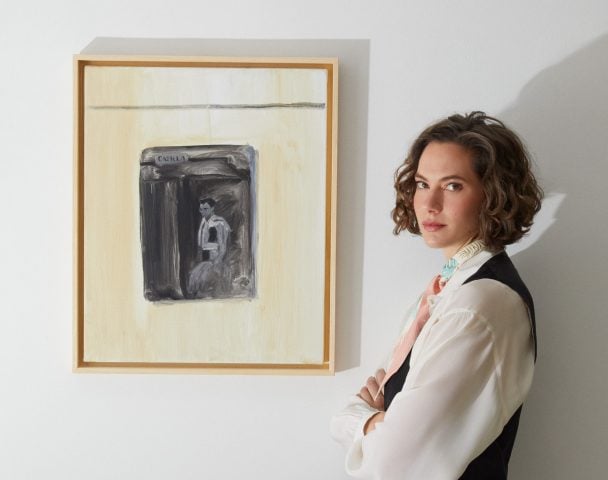Archaeology & History
Greek Archaeologists Uncover a 1,800-Year-Old Marble Head of Apollo
The major discovery follows a Hercules statue found last year.
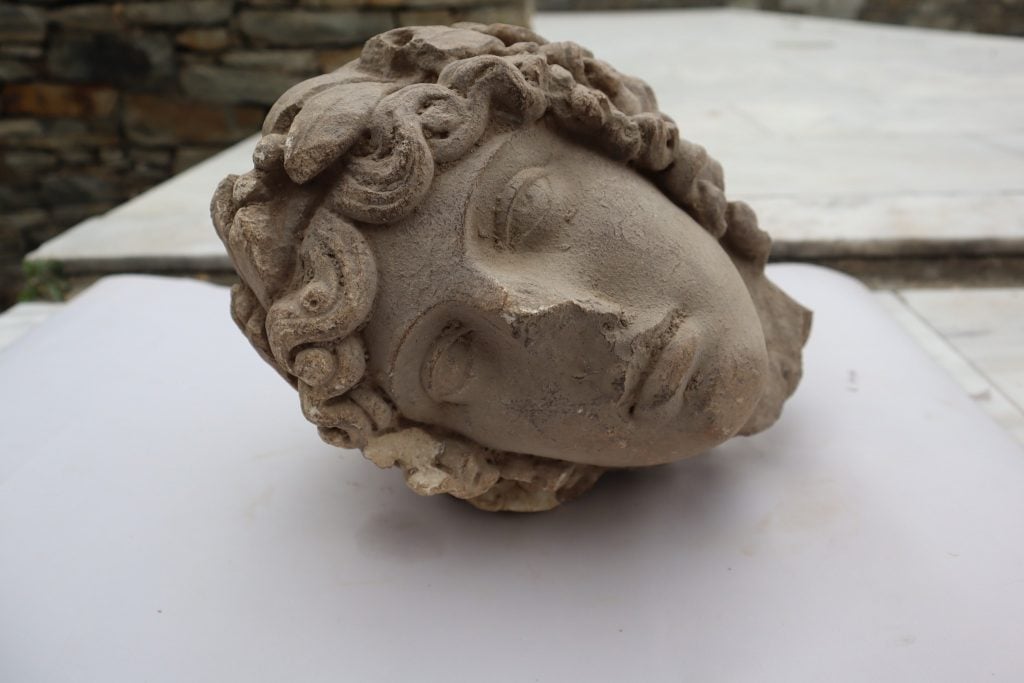
A team of archaeologists from Aristotle University of Thessaloniki have uncovered a well-preserved marble head of the Greek god Apollo during excavations in Philippi, northwest Greece.
Dated to the 2nd or 3rd century C.E., the head presents a fine-featured young man with a wave of curls and his customary laurel crown—details, archaeologists said, that mark him out as the Greek god of archery and music.
It was uncovered in late 2023 by a team of 15 students led by professor of Byzantine Archaeology Natalia Poulos, who continues University of Thessaloniki work that has been ongoing at Philippi since the 1960s.
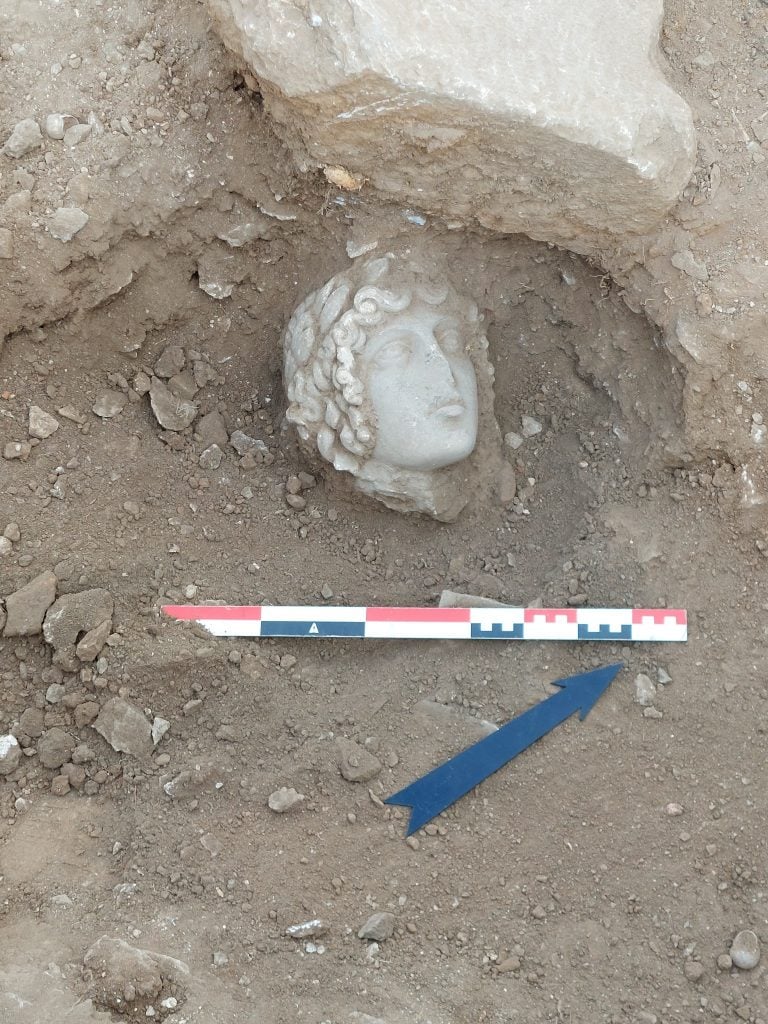
The head of the Greek god Apollo in Philippi is believed to be 2rd or 3rd century B.C.E. Photo: Greek Ministry of Culture.
When originally carved, the statue of Apollo would have had a devotional function. However, archaeologists believe its current placement suggests it was repurposed in medieval times and stood as one of many adornments in a town square fountain. The discovery of a coin depicting Emperor Leo VI has led researchers to suggest that the space had been in use since the 8th or 9th century.
Unlike some of Greek gods, Apollo had no lingering symbolic importance in Christian Philippi. It is known that classical and Roman-era statues continued to adorn public buildings and spaces into the late Byzantine period (roughly 13th to 15th century) and the statue’s presence likely points to a celebration both of exquisite artistry and the city’s cultural continuity.
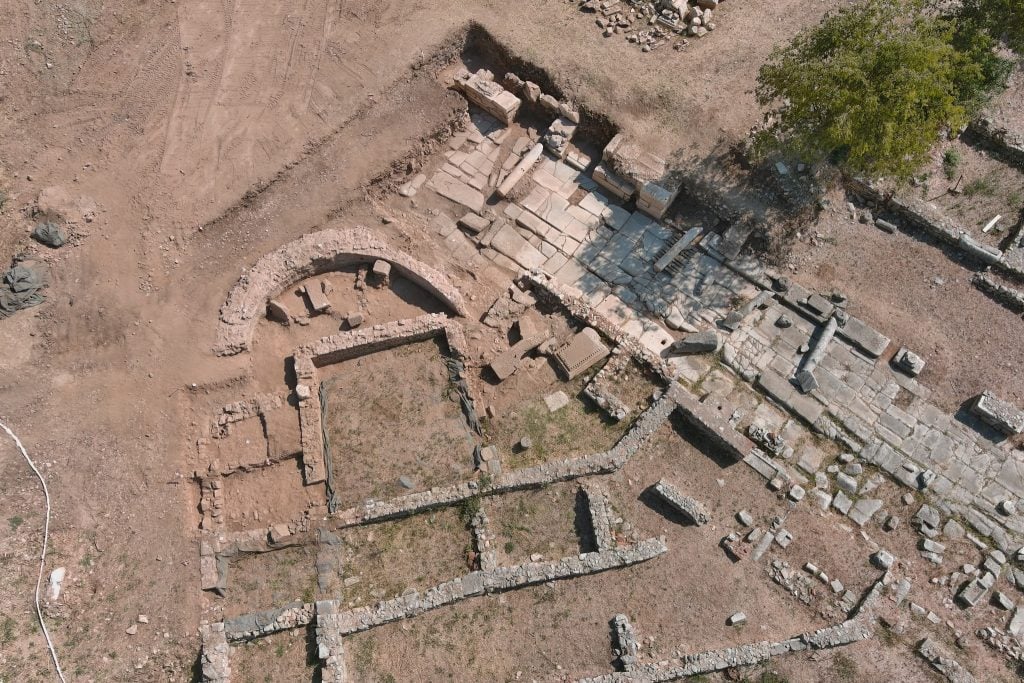
Aerial photograph of the site under excavation in Philippi. Photo: Greek Ministry of Culture.
The head of Apollo was found east of the Philippi’s southern main road, a place where it intersects with the city’s northern axis. Excavation work in recent years has gradually revealed a square comprised of richly decorated buildings. Last year, archaeologists discovered a statue of Hercules at the site, one they also believe belonged to the fountain. The largely intact statue depicted a typically muscular and youthful Hercules with a club and a lion hanging from his hand.
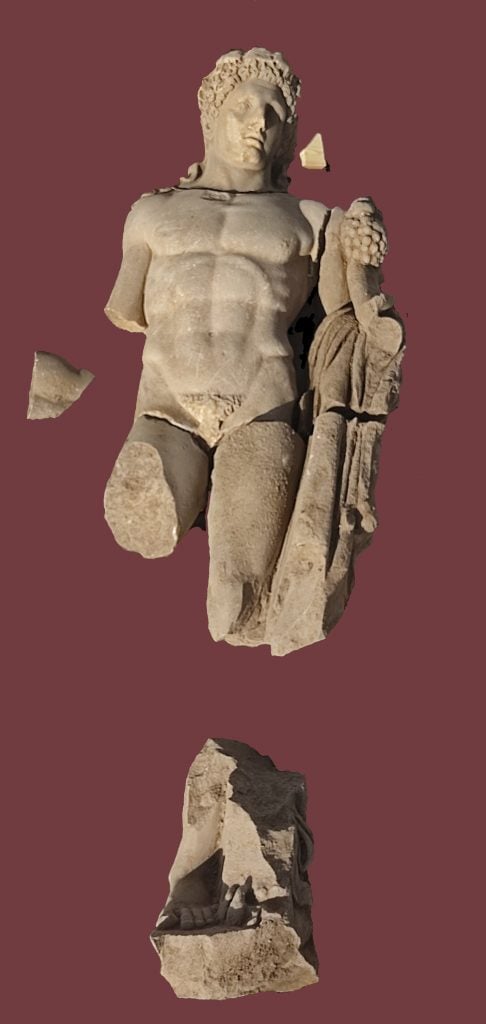
2,000-Year-Old Statue of Hercules. Photo courtesy The Greek Ministry of Sport and Culture
Philippi was founded in 356 B.C.E by King Philip II of Macedonian, father of Alexander the Great. It grew in wealth and prominence owing to its position on the Via Egnatia, a road that linked Europe with Asia. Its importance continued into the Roman era and it was the site of the climatic battle between the forces of Mark Antony and Octavian and those of Brutus and Cassius. It became an important early Christian site following the visit of Apostle Paul in the 1st century C.E.
Archaeological work began in Philippi in the first decades of the 20th century. The University of Thessaloniki excavations are set to continue later this year.





